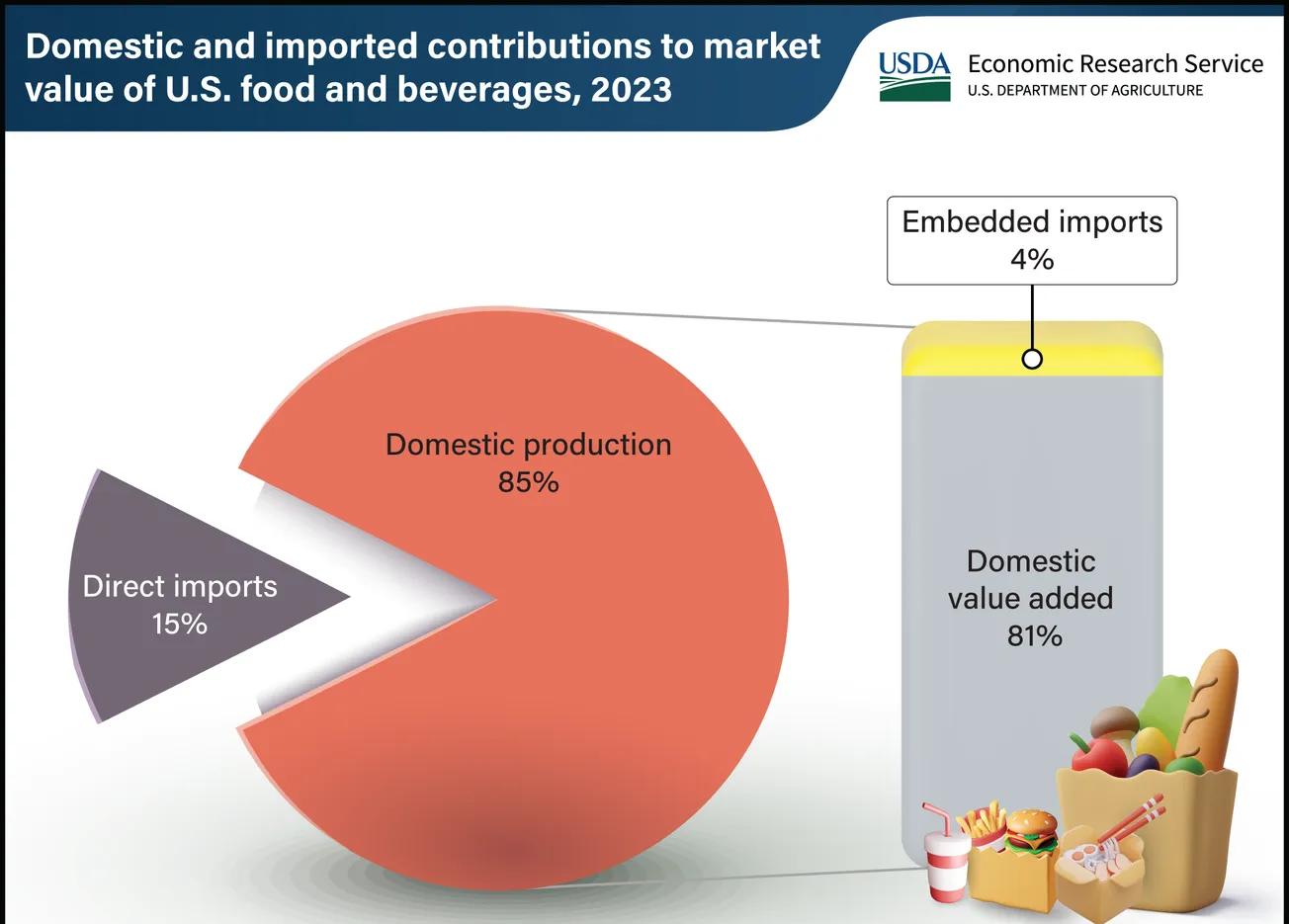WASHINGTON – Domestic suppliers accounted for the lion's share of consumer spending on food and beverages in 2023, the U.S. Agriculture Department said this month.
Direct imports accounted for 15% of U.S. food and beverage purchases in 2023, and 85% percent was produced by the domestic supply chain, the USDA’s Economic Research Service said in an update to its Food Dollar Series.
U.S. consumers spent $2.9 trillion on food and beverages in 2023, USDA said. Data for 2024 will be released in November.
The latest update to the Food Dollar Series shows direct imports’ share of total U.S. food and beverage purchases has more than doubled over three decades, from 7% in 1993.
Direct imports are finished products that are imported as ready for sale to the consumer. Examples include farm-raised shrimp from Thailand, fresh avocados from Mexico, and wines from Italy.
Of the domestically produced portion, 4% covered the cost of embedded imports. Embedded imports are ingredients and non-food inputs used in domestic food production, according to the report. For example, cranberries imported from Canada are used in domestic juice production, and cookware produced in France is used in domestic restaurant kitchens.
For a dollar representative of all spending on domestically produced food, U.S. farm production's proportion declined to 9.1 cents in 2023, from 9.3 cents in 2022. Labor’s share of the food dollar, measured by salary and benefits, decreased for a third straight year to 53.9 cents, down from its highest value recorded in the Food Dollar Series at 57.6 cents in 2020.
The foodservices share, reflecting the costs of making and serving meals at restaurants and other food-away-from-home establishments, declined for the fourth consecutive year in 2023, to its lowest value in two decades.










